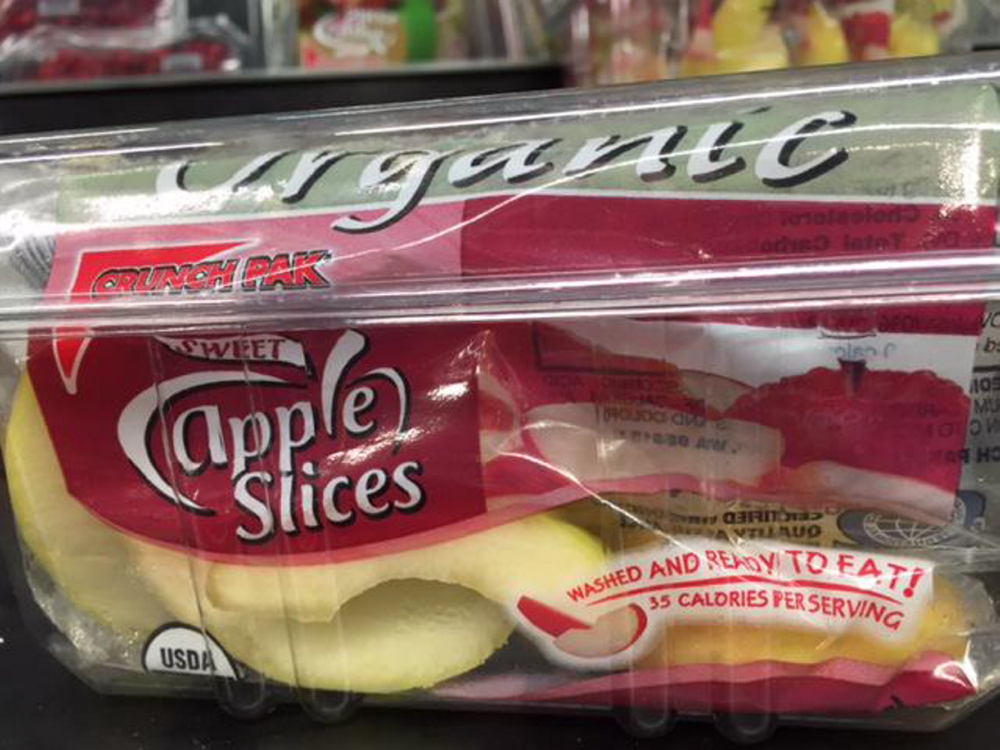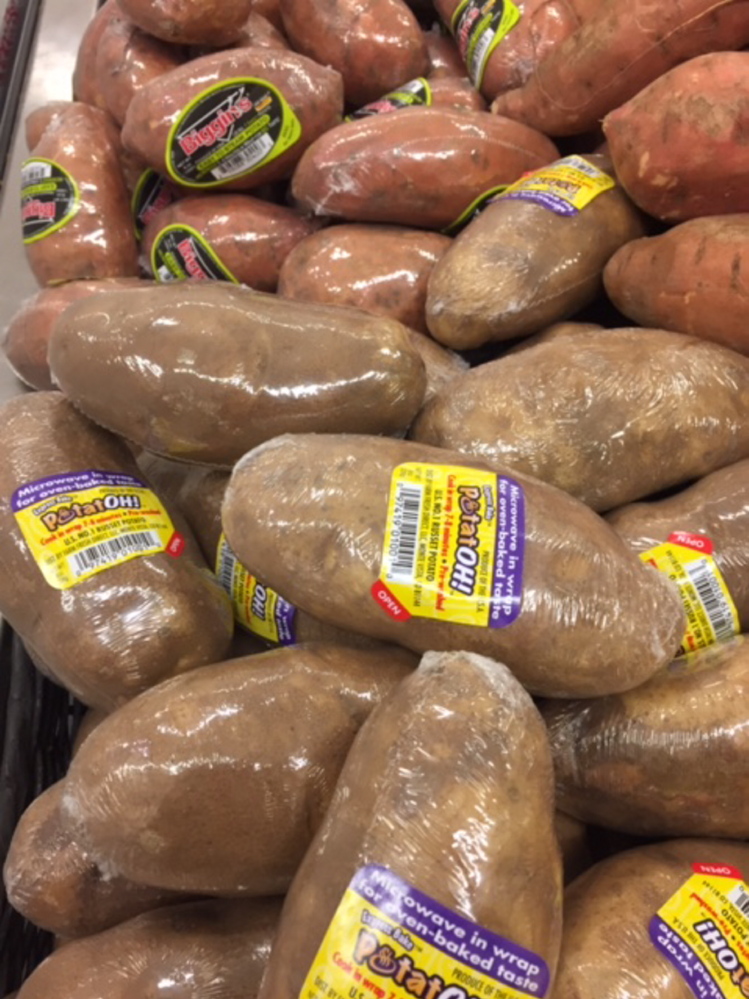Some six weeks ago, I encountered bagged – very bagged – apple slices at a grocery store, and I got in a snit and tweeted this:
“Wasteful packaging @WholeFoods in Portland, ME. Plastic box + many bags. Apple skin is Mother Nature’s wrapper.”
What especially provoked me was that the package touted its contents as “organic,” which seemed to me observing the letter, but not the spirit, of the word.
Right back at ya, WholeFoods said. Actually, what they said, or rather tweeted, in response was this:
“Customers vote with $. Educate your readers with fab articles on the woes of industrial food packaging. We’d love it!”
That’s a tall order for this very small space. For now, let’s settle for a brief but not remotely comprehensive introduction, courtesy of Ed Treacy of the national Produce Marketing Association.
Innovations in produce packaging come in several types. Those apples, for example, fall into the value-added category, which is driving much of the growth in the produce sector, Treacy said. Think ready-to-eat carrot and celery sticks, baby carrots with dip in kid-sized packages, pomegranate seeds in plastic cups, and the granddaddy of it all – bagged and boxed salad. Individually shrink-wrapped potatoes for microwaving – another product I have been encountering at the market that galls me – are also intended to appeal to our zeal for speed and convenience.
Beyond convenience, much new produce packaging, Treacy said, protects delicate fruits and vegetables – both en route and in the store – and it extends their shelf life. Think shrink-wrapped individual cucumbers or berries in plastic clam shells. Many of these items rely on so-called “smart packaging,” which has padding or just the right number of air holes, or some other feature to protect its contents, he said. If we are throwing away more produce packaging than we used to, Treacy said, we are throwing away less of the produce itself.
“The consumer today wants things more and more chopped, ready to go,” he said. “(They’re thinking) ‘I don’t have a lot of time, but I want to eat healthy. I have to get dinner ready in 45 minutes’ because you have to take the kids to the soccer game.”
So produce purveyors are “responding to the consumers’ needs,” he continued. “It’s what the retailers are very good at.”
Going forward, should we expect more of the same?
Treacy hedged. No one can predict the future, he said. Then he added, “Probably. I don’t see it going away. I don’t see the average consumer getting an extra hour in their day.”
Back to you, shoppers.
Send questions/comments to the editors.





Success. Please wait for the page to reload. If the page does not reload within 5 seconds, please refresh the page.
Enter your email and password to access comments.
Hi, to comment on stories you must . This profile is in addition to your subscription and website login.
Already have a commenting profile? .
Invalid username/password.
Please check your email to confirm and complete your registration.
Only subscribers are eligible to post comments. Please subscribe or login first for digital access. Here’s why.
Use the form below to reset your password. When you've submitted your account email, we will send an email with a reset code.